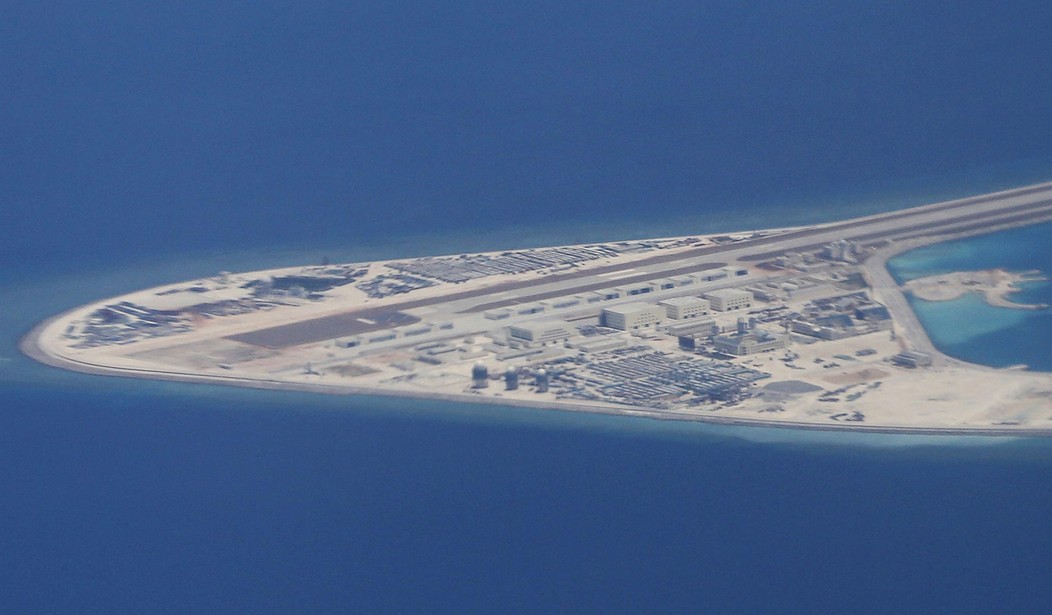What we are witnessing in Ukraine, and perhaps in a future conflict in Taiwan, is a new model for fighting Cold War 2, one in which the belligerents tacitly agree to fight but only within designated foreign borders. The process of delimiting the allowable combat area has so far been a complex exercise in signaling. For example, former Russian president Dmitry Medvedev recently tried to draw some Red Lines: “If Ukraine tries to strike at Crimea, there will be retaliatory strikes, all Ukraine remaining under Kyiv’s rule will burn. The response in the event of strikes in the Crimea and deep into Russia will be quick, tough and convincing. Russia does not set itself any restrictions in the form of a response to attacks, depending on the nature of the threats, it is ready to use all types of weapons. Those who argue that sending weapons to Ukraine will help start negotiations are wrong, the result will be just the opposite.”
But he’s kidding no one. Everything is negotiated. Russia has manifestly set restrictions on itself by not attacking NATO sovereign territory, just as NATO has implicitly discouraged Kyiv from striking targets on Russian territory, except when they are directly linked to attacks on Ukraine. Both sides are fighting under implicitly negotiated rules of engagement, which to the extent they are understood and mutually accepted, have limited escalation so far.
Washington is probably hoping to apply the same framework to the looming conflict with China over Taiwan, which Pentagon leaks indicate may happen by 2025. The area of operations is likely to encompass the Philippines, the Solomon Islands, and indeed any sea/land space in the First Island Chain. A USAF memo defined U.S. defense preparation as “a fortified, ready, integrated, and agile Joint Force Maneuver Team ready to fight and win inside the first island chain.” Implied in this formulation is the unspoken corollary: the Quad Alliance hopes to prevent war from spreading outside the First Island Chain to Guam, Hawaii, Japan, India, and Australia — in the same way that warfare may not spread to NATO countries, at least not without lighting the nuclear fuse.
This desire to preserve distinctions may have played a part in the Biden administration’s reluctance to shoot down a Chinese high-altitude reconnaissance balloon recently spotted above the central United States. Forbearance signals not only what America will do, but it also defines what the administration expects China to do. With China and the space above it thronged with U.S. reconnaissance platforms, Biden may have decided to let the balloon slide for as long as he could rather than give Beijing an excuse to retaliate against a far more valuable American platform.
The same kind of political hairsplitting may be observed in the treatment of Iran, which is one of Russia’s major suppliers of bombardment drones against Ukraine. For the U.S. to bomb Iran would widen the war. Fortunately for NATO, Iran’s factories were suddenly destroyed by a mysterious attacker, believed to be Israel. Since Israel and Iran are practically at war anyway, this way of dealing with Iran added no new belligerents to the conflict. To the public, this may all look like unnecessary fiction. But policymakers may sincerely believe that such limits, tenuous though they may be, stand between humanity and Armaggedon.
Fiction is the boundary between limited war and total conflict.
However, it is not clear whether the Ukrainian proxy war model can be successfully replicated in the Pacific. For one thing, with the exception of Taiwan, unlike the Ukrainians and Eastern Europeans, the peoples and cultures of the First Island Chain are not technologically advanced cultures with centuries of military tradition. The West cannot simply give them missiles, electronic systems, and fighter aircraft and expect them, after a little training, to face the Chinese juggernaut. The USMC, realizing this, plan on Americans doing it mostly by themselves.
To perform this role, the Marines are largely reinventing themselves. The new plan sees the Marines as mounting dispersed operations across chains of islands, moving “organic precision fires,” of which HIMARS and GLSDBs are familiar examples, via airfields and lightweight amphibious warships to various and unexpected points, to close straits, deny sea lanes and ambush air corridors. It was a doctrinal shift that frankly foresaw the tactics in Ukraine. In military terms, it may even be brilliant. But the irremediable weakness of the USMC concept in the Pacific is that, unlike Ukraine, it will require Americans, Japanese, Australians, or Indians to carry out this sophisticated war of mobility. For this reason, the Ukrainian model of fighting Cold War 2 in the Pacific is severely limited for any Chinese operations outside Taiwan itself, simply because the local armies will need more than training and logistical support to resist. A move by Beijing against any other part of the First Island Chain will risk a direct confrontation between the great powers to a degree far greater than in Eastern Europe.
Books: Against the Great Reset: Eighteen Theses Contra the New World Order Kindle Edition by Michael Walsh (editor). In this timely and necessary book, Michael Walsh has gathered trenchant critical perspectives on the Great Reset from eighteen eminent writers and journalists from around the world. Though I wouldn’t exactly consider myself an eminent writer, mine is one of the 18 chapters in this book, and I think it’s worthwhile.
Tennozan: The Battle of Okinawa and the Atomic Bomb by George Feifer.
Twilight of the Gods: War in the Western Pacific, 1944-1945 by Ian W. Toll.
Year Zero: A History of 1945 by Ian Buruma.










Join the conversation as a VIP Member